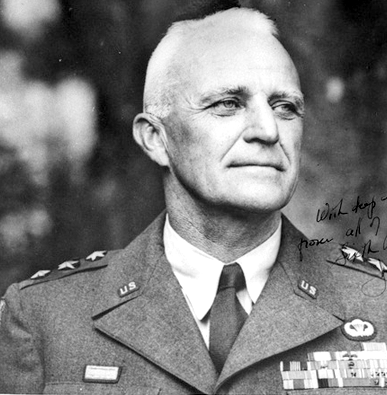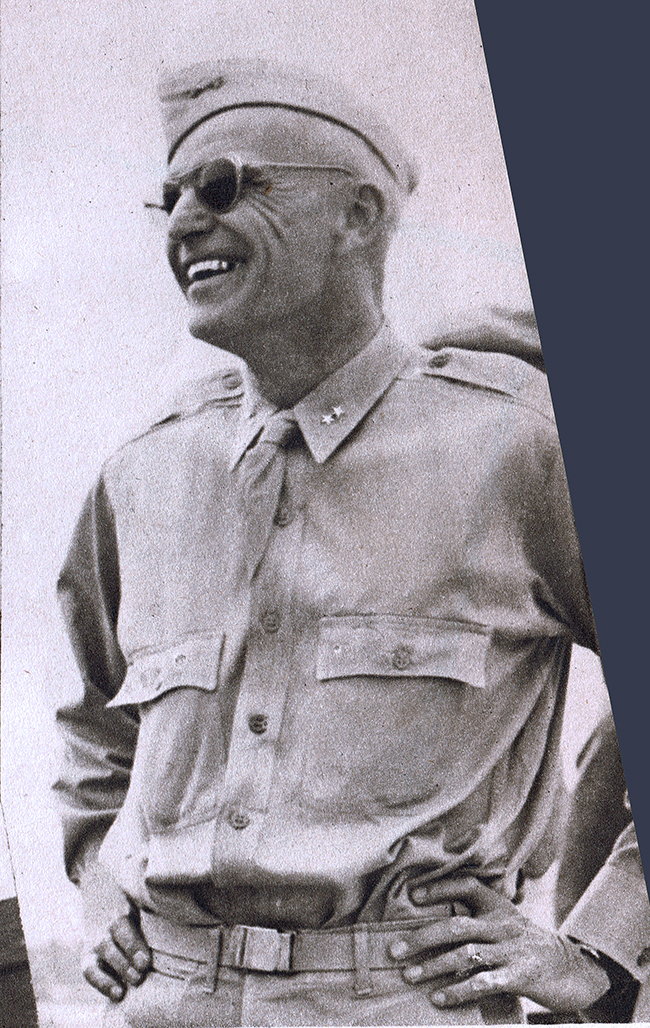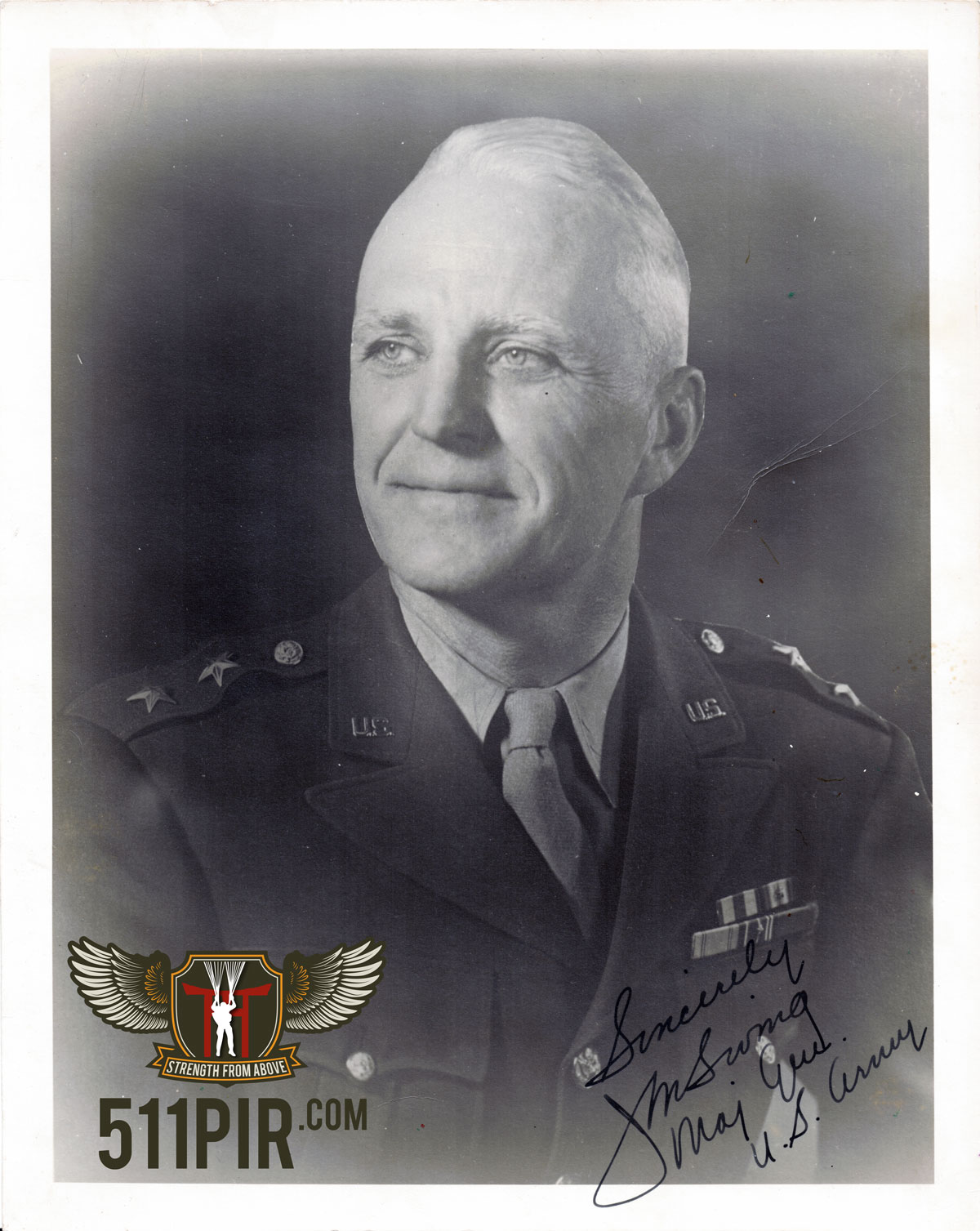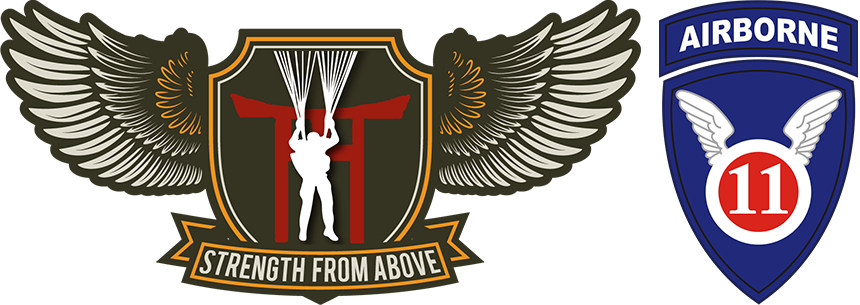Major-General Swing, Joseph May

Commanding General, 11th Airborne Division
Feb 28, 1894 – Dec 9, 1984 (Age 90) - gravesite - Military Service Timeline - Eulogy by Colonel Robert S. Beightler
Citations: Distinguished Service Cross, Distinguished Service Medal, Silver Star (2x OLC), Bronze Star (2x OLC), Legion of Merit, Combat Infantryman’s Badge, Air Medal (OLC), Commendation Ribbon, World War II Victory Medal, the American Defense Medal, and the Asiatic-Pacific Campaign Medal with three Battle Stars for the Pacific Theater
Ranks: Began attending West Point June 14, 1911; commissioned 2nd Lieutenant June 12, 1915; 1st Lieutenant July 1, 1916; Captain May 15, 1917; Major May 7, 1924; Lieutenant-Colonel June 24, 1936; Colonel August 1, 1943; Major General August 16, 1944; retired February 28, 1954
A native of Jersey City, New Jersey, Joseph M. Swing graduated from West Point Military Academy on June 11, 1915 in the same class as Dwight D. Eisenhower and and Omar Bradley and was described in the Point's Howitzer annual as: "A rough-house kid with a happy-go-lucky disposition... The possessor of a lithe and active body, a fertile brain and a faculty for making friends, we have no doubt of his success."
After graduation, Swing was commissioned a Second Lieutenant in the 4th Field Artillery which began a military career that would go on to span five decades, beginning during the 1916 campaign against Mexican revolutionary Pancho Villa.
During the Great War (WWI), Swing served in France as a Captain in the field artillery. In 1926 he graduated as an honor student from the field artillery school at Fort Hood. Swing then served as an instructor at Fort Hood until 1931. Re-assigned to Washington, D.C., he graduated from the Army War College in Washington in 1935.In February 1942, Swing, with the rank of brigadier general, was appointed artillery commander for the 82nd Infantry Division, which was converted into the army's first airborne division that summer. Quickly becoming a disciple of the airborne concept, Swing, promoted to major general, was named commander of the newly created 11th Airborne Division in December 1942.
The 11th Airborne was officially activated on February 25, 1943, three days before General Swing celebrated his forty-nineth birthday at Camp Mackall, North Carolina.
 While training the division, Swing headed a special board that recommended numerous changes in the use of airborne troops after their disappointing performance in operations in 1942 and 1943. In maneuvers at the end of 1943, he demonstrated with his 11th Airborne Division how airborne forces could overwhelm an enemy, ending any doubts in the army hierarchy about the use of airborne troops in division-size units.
While training the division, Swing headed a special board that recommended numerous changes in the use of airborne troops after their disappointing performance in operations in 1942 and 1943. In maneuvers at the end of 1943, he demonstrated with his 11th Airborne Division how airborne forces could overwhelm an enemy, ending any doubts in the army hierarchy about the use of airborne troops in division-size units.
Swing took his division to the Southwest Pacific Theater in May 1944. In the fall, it was committed, as light infantry, to the struggle for Leyte Island in the Philippines. This action was in a large part a result of Swing's insistence that his division was combat-ready and that they could do things to help secure the island that other Allied units had as yet been unable to accomplish.
In 1945, Swing's men, fighting both as light infantry and airborne troops, participated in the bitter battle for Manila, helped clear southern Luzon Island of Japanese, and assisted in mopping-up operations in northern Luzon. In August 1945, Swing's division deployed to Japan as the vanguard of the Allied occupation force there. Thereafter, he assumed responsibility for occupying force on the island of Hokkaido and the northern portion Honshu. In February of 1948, Swing assumed command of the I Corps, headquartered in Kyoto, Japan.
Upon his return to the United States in 1949, Swing became commandant of the Army War College at Fort Leavenworth, Kansas. In 1951, he was named commanding General of the Sixth Army at the Presidio in San Francisco. Swing held that billet until he retired from active duty on February 28, 1954.
After Swing’s retirement from the military, President Eisenhower, his friend and former classmate, nominated him to serve as Commissioner of Immigration and Naturalization. The Senate confirmed Swing’s nomination and he began his tenure as Commissioner on May 24, 1954. During his eight years as head of INS, Swing over saw a reorganization of the Service and implemented programs designed to attain more aggressive enforcement of immigration and deportation policies. He retired from the INS in 1961. Swing died on December 9, 1984, at the age of 90. - Source1 - Source 2

To learn more about the 11th Airborne Division in World War II, please consider purchasing a copy of our books on the Angels:
1. WHEN ANGELS FALL: FROM TOCCOA TO TOKYO, THE 511TH PARACHUTE INFANTRY REGIMENT IN WORLD WAR II, available in the regimental online store, on Amazon or wherever military history books are sold.
2. DOWN FROM HEAVEN: THE HISTORY OF THE 11TH AIRBORNE DIVISION IN WORLD WAR II - VOL 1. CAMP TOCCOA THROUGH LEYTE CAMPAIGN, available in the regimental online store, on Amazon or wherever military history books are sold.
 |
 |
